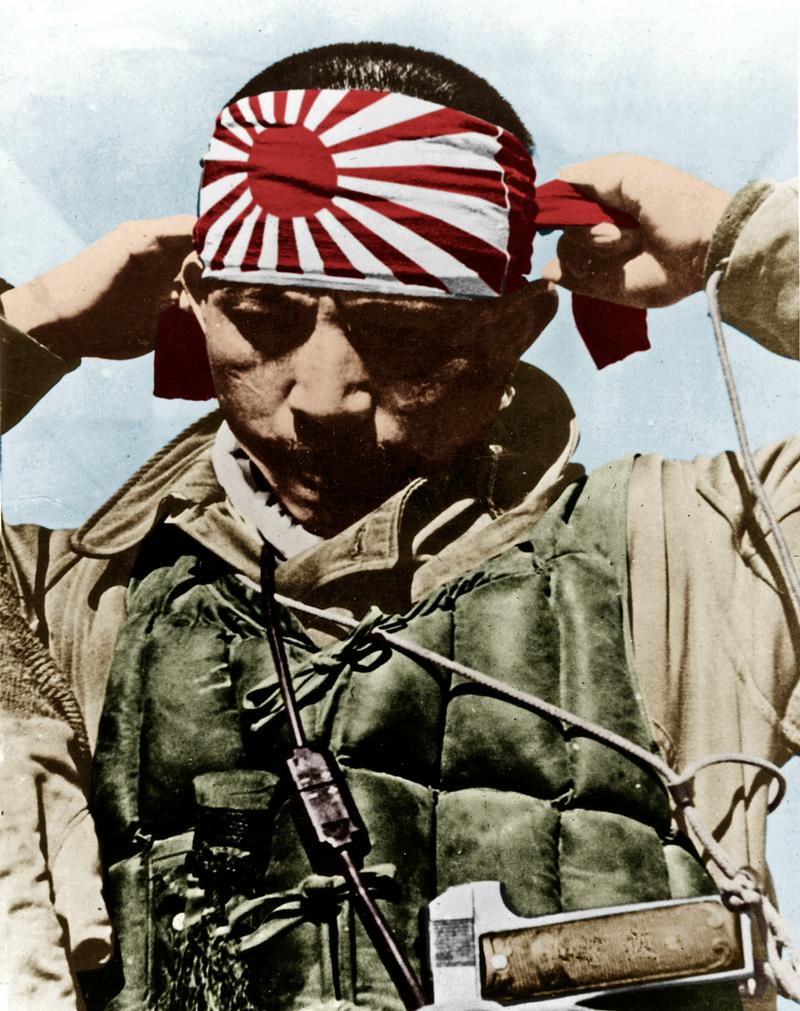Kamikazes: What Were They? Who Were They And How Did They Sign Up For This?
By | April 10, 2021

By fall 1944, the Pacific theater of World War II had slipped out of Japan's control, they had lost a huge percentage of their trained pilots, and the dwindling supply of aircraft that they had left were proving ineffective against Allied forces. The Land of the Rising Sun began taking increasingly drastic measures to maintain a defensive position, and on October 25, 1944, they resorted to a practice unthinkable to most of the Western world by employing suicide bombers, A.K.A. kamikaze strikes, against the Allied warships in the Battle of Leyte Gulf.
How Did We Get Here?
Prior to World War II, Japan had never been successfully invaded by a foreign power. When the Mongols got close in the 1200s, they were taken out by a freakishly lucky series of typhoons, which the people of Japan regarded as a type of "divine wind," or kamikaze, meant to save them from foreign subjugation.
Japan also has a long history of ritual suicide. Since the ancient era of the samurai, ritual suicide, or seppuku, was a fairly common practice, either as a means to preserve one's honor or avoid capture on the battlefield. Being captured by an enemy was simply not an option to many Japanese soldiers, and mass suicide was common among soldiers and civilians alike when faced with the possibility. In a particularly brutal case during the Battle of Okinawa, the Home Guard handed out grenades so the locals could go out quick and easy, and many jumped to their deaths from the Laderan Banadero cliff during the long Battle of Saipan, believing American forces would rape and torture them when caught.

The Kamikaze Program
The war culture of Japan left so little room for failure that even after two atomic bombings, the Japanese military still an attempted a coup, known as the Kyujo Incident, when the Ministry of Defense and several members of the Imperial Guard stormed the palace in an effort to stop the emperor the night before Japan's surrender on August 15, 1945. After their failure, coup leaders Kenji Hatanaka and Jirō Shiizaki shot themselves on the lawn of the Imperial Palace.
As a result, when Navy Captain Motoharu Okamura claimed a little more than a year earlier that he could "swing the war in [their] favor" by crash diving the planes themselves into Allied warships, the generals were willing to listen. They had first tried similar programs like the kaiten, a one-man torpedo, but it was abandoned without much use.
The first unit of kamikaze consisted of 23 young volunteers under the guidance of Colonel Asaichi Tamai, many of whom were probably under significant social pressure to participate. There was actually a 24th pilot, Lieutenant Yukio Seki, but he admitted he didn't want to go and only did because he was ordered.

Kamikaze In World War II
Though the kamikaze program was a last-ditch effort that took the lives of more than 3,000 Japanese soldiers, many as young as 17 years old, it also killed more than 15,000 U.S. soldiers and sank more than 300 ships. The first recorded kamikaze attack took place on October 25, 1944 during the invasion of Leyte Gulf, where Japanese pilots targeted several American escort carriers. Although the U.S. managed to take down a few with anti-aircraft weapons, the Japanese pilots successfully sank the gigantic U.S.S. St. Lo as well as several other ships, wounding the naval force and killing hundreds of Americans.
On April 6, 1945, over 300 kamikaze pilots descended on Okinawa in a large-scale attack against an American fleet. "There was probably 45 planes in the air," recalled John Chapman of the U.S.S. Newcomb. "You could be firing on the aircraft ... and you'd see pieces flying over the planes and everything else, and they'd just keep right on a-coming."
The last kamikaze attack actually happened on the very day Japan declared its unconditional surrender, as an official ceasefire had not yet been received by some high-ranking military leaders, but luckily for those pilots, they were unable to locate their targets and abandoned the mission. Hours after the surrender, many military leaders—including Matome Ugaki, who led the initial kamikaze attack at Leyte Gulf—committed ritual suicide by sword.

